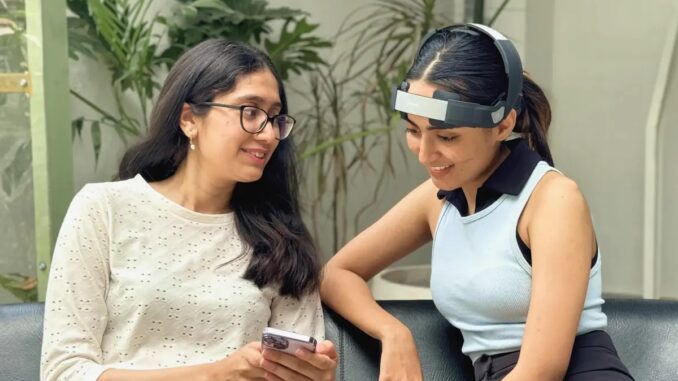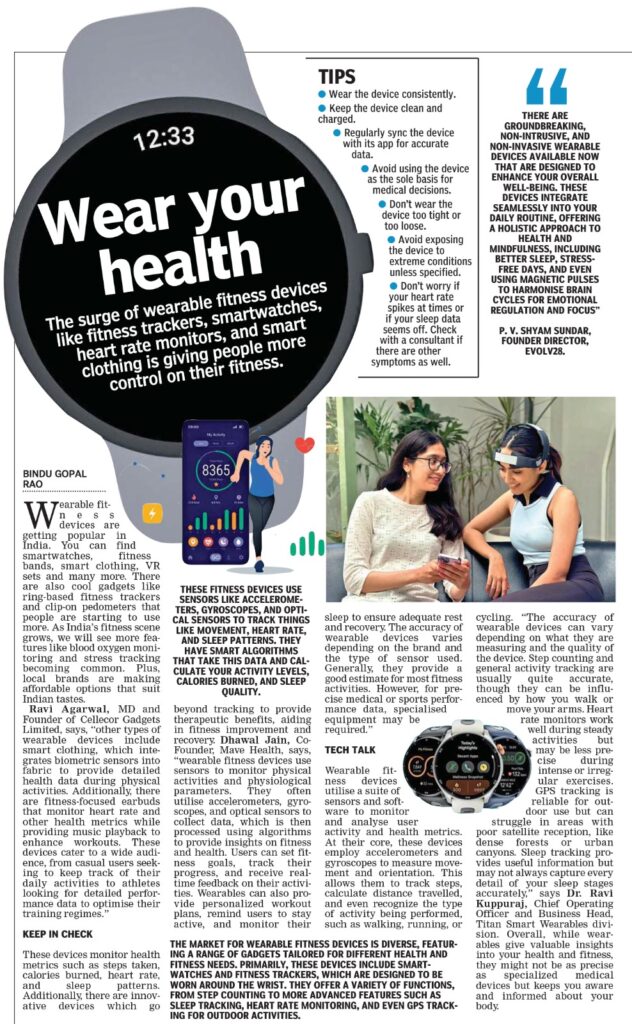
Wearable fitness devices have changed how we look at health and wellness. They mix sensor data with smart algorithms to help you stay on top of your fitness goals. Whether you’re an athlete or just want to stay active, these devices give you real-time feedback and motivation. Just pick one that fits your goals and lifestyle.
For a truly balanced life, consider devices that also support mental wellness. These innovations can help improve your sleep, reduce stress, and enhance focus, offering a holistic approach to your health journey.
In addition to tracking physical health, some advanced devices like Evolv28 use gentle magnetic pulses for brain entrainment, helping with emotional regulation and focus. This technology offers a novel approach to mindfulness, making it easier to manage stress and improve mental well-being.
The accuracy of these devices can vary, but they are generally helpful for most people. Heart rate monitoring can have some error, calories burned estimates can be off by a significant amount, and sleep tracking might overestimate sleep time and underestimate wakefulness. Different brands and models have different accuracy levels, so think about your activity level, lifestyle, and goals when choosing a wearable.
When it comes to mental wellness, devices using magnetic pulses for emotional regulation are designed to be both safe and effective with little or no side effects, providing a gentle, non-invasive way to improve your mental health.
The Indian market offers a wide range of wearable fitness devices that cater to various needs and preferences. The category is rapidly growing, offering a wide range of products catering to different needs and preferences. These wearables cater to a wide array of users, from tech enthusiasts and fitness buffs to professionals and individuals with specific health monitoring needs. The market continues to evolve with advancements in technology, making wearables increasingly versatile and integral to daily life. AI and big data are revolutionizing the smart wearable industry by transforming these devices into essential tools for personalized health and fitness.
Here’s an overview of the types of wearable devices available:
- Smartwatches: These multi-functional devices offer features beyond timekeeping, such as receiving notifications, making calls, sending messages, tracking fitness activities, and even supporting various apps. They often come with health monitoring capabilities, including heart rate tracking, blood oxygen levels, and ECG.
- Fitness Trackers: These devices are designed to monitor physical activity, track steps, measure heart rate, count calories burned, and sometimes even monitor sleep patterns. They are popular among fitness enthusiasts and individuals looking to maintain an active lifestyle.
- Smart Bands: Like fitness trackers but often with additional features like basic smartwatch functionalities, smart bands provide a middle ground for users who want both fitness tracking and some smart features without the bulk of a full-fledged smartwatch.
- Smart Rings: These compact wearables are used for tracking health metrics such as sleep quality, activity levels, and heart rate. They are discreet and ideal for those who prefer a minimalist approach to wearable technology.
- Hearables: These are smart earphones or earbuds with capabilities beyond audio playback. They can track fitness data, provide language translation, offer voice assistant support, and even monitor biometric data.
- Smart Glasses: These devices can provide heads-up displays, navigation assistance, and even voice-activated commands. They are used for a variety of applications, from everyday convenience to professional uses in fields like engineering and healthcare.
Wearable fitness devices are powerful tools that can significantly enhance an individual’s fitness regime by providing real-time data and insights into their physical activities and overall health. To effectively use these devices, individuals should consistently wear them to accurately track daily activities such as steps, heart rate, and calories burned. Setting specific fitness goals through the device, such as daily step counts, exercise minutes, or sleep hours, can provide motivation and a clear target to achieve.
Many devices also offer personalised training plans and feedback based on the activity data they collect, which can guide users toward more effective workouts and recovery strategies. For instance, devices with built-in coaching features can suggest workout intensities and durations tailored to the user’s current fitness level and goals.
Furthermore, integrating these devices with other health apps and services can offer a more comprehensive health management approach, allowing users to track nutrition, set medication reminders, and even connect with health professionals to discuss their fitness progress. Regularly reviewing the data collected and adjusting fitness plans accordingly helps users stay on track and make informed decisions about their health routines.
The accuracy of wearable fitness devices can vary depending on the type of sensor technology used and the specific health metrics being measured. Generally, devices from reputable brands like Apple, Garmin, and Fitbit are reliable for basic functions such as step counting, heart rate monitoring, and sleep tracking. These brands invest heavily in research and development to enhance the precision of their sensors and the algorithms that interpret the collected data.
However, when it comes to more complex measurements such as calorie expenditure and advanced sleep stage analysis, the accuracy can be less reliable and should not be used as a substitute for professional medical assessment. The performance of GPS for tracking distance and pace in fitness devices is generally accurate, especially in devices designed for running and cycling outdoors.
Users should also be aware that factors like device placement on the body, skin tone, and even the tightness with which the device is worn can affect sensor accuracy. It’s important for users to follow manufacturer guidelines on how to wear and maintain their devices to ensure the best possible accuracy.
Read the full story that first appeared in Deccan Chronicle dated July 30, 2024 here:


Leave a Reply